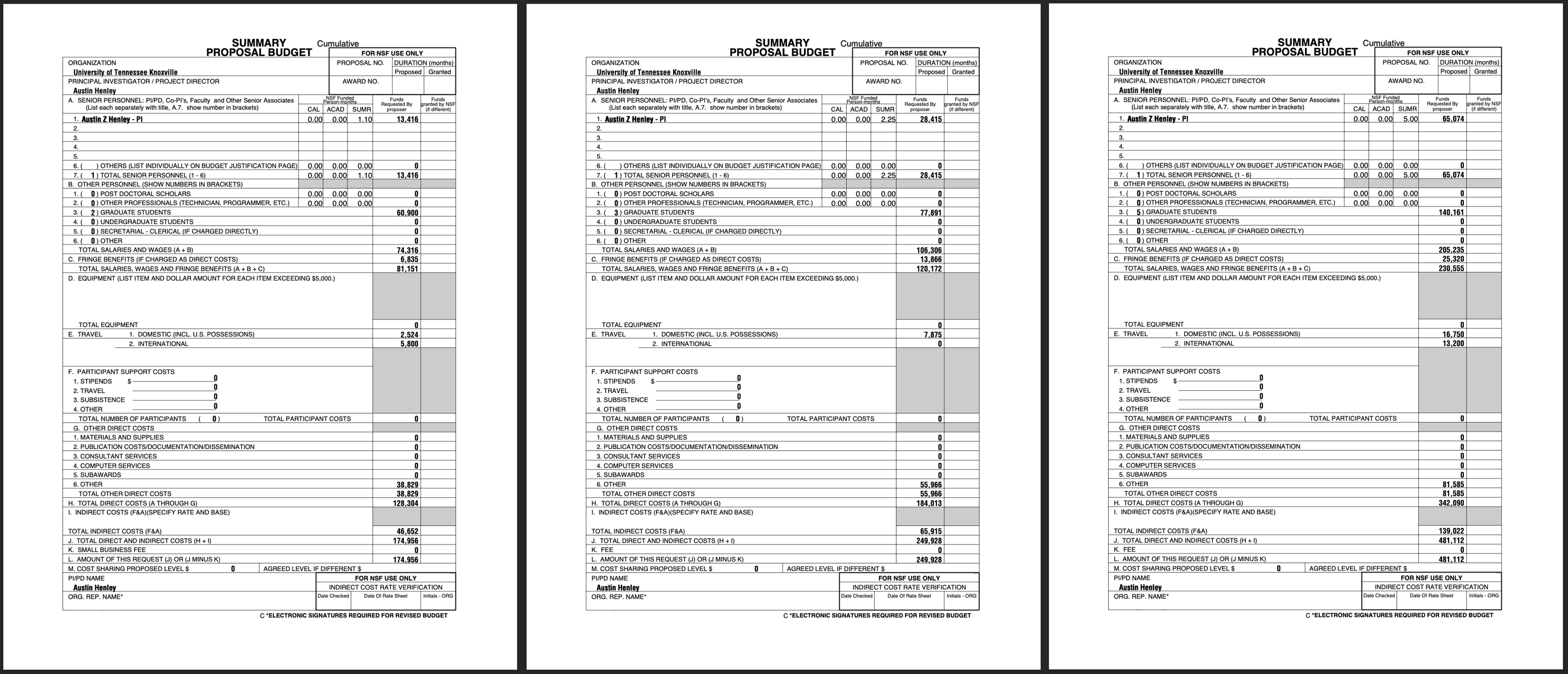
Associate Teaching Professor
Carnegie Mellon University

See the discussion of this post on Hacker News.
Until I wrote my first grant proposal, I knew very little about what a federal research grant pays for.
I'll share what my grants covered and the reasoning behind it. Note: I was a computer science professor researching software engineering at a large state university in the US, primarily funded by the National Science Foundation (NSF).
TLDR: Each of my grant budgets included the university's cut, a fraction of a month of salary for me per year, a graduate student, conference travel for both of us, and a very small amount to conduct user studies. This amounts to a little under $100,000 per year per grant.

I'll go into detail of each of the following:
People seem shocked to find out that the university takes a portion of every grant, and even more so when they hear the percentage that they take.
For every $1 I budgeted for my research, I had to account for an additional $0.53 that would go to the university. Universities have a pre-specified percentage for overhead (also called facilities and administrative (F&A) costs or indirect costs). Equipment and tuition are excluded from the overhead calculation. It supposedly covers things like having a building to work in, electricity, basic computer equipment, and support staff. It is split amongst the university, college, and department. These F&A rates seem to only ever go up...
A very small amount of this money will sometimes trickle back down to the researcher.
To put it in perspective, my last grant was $481,112 of which $139,022 was budgeted to go to the university for overhead.
Yes, professors get to pocket some of their grants! Though that is because they are often only guaranteed 9 months of salary despite working the entire year.
It is typical to pay yourself 0.5 to 1 month of salary per grant. Specifically, my three NSF grants covered 0.55, 0.75, and 1.0 months of my salary for each year. I found it funny that my college factored in annual raises into the budget that were always far higher than I actually received.
A very stressful part of faculty life was knowing that my annual compensation was about to take a nose dive if I don't get another grant.
More grants is generally better, though there are restrictions on your salary. Most notably, the NSF restricts you to 2 months of salary from all of your active NSF grants at any given time. Even if you have other funding sources, you can't have more than 12 months of salary.
What do you do if you're swimming in funding then? You can buy out of teaching. You effectively pay for the cost of an adjunct to take your teaching load.
The largest component of my grants was supporting a graduate student. They're the ones doing the bulk of the daily work. It includes their salary ($2200 a month), tuition ($15,000 a year), and benefits ($200 a month). Approximately $233,000 of $481,112 from my last grant was for a graduate student for 5 years.
There are ways to stretch this further. For example, many of my graduate students also worked as teaching assistants during the school year which covered their tuition, benefits, and a portion of their salary, so I just had to pay the difference in salary. Though it did eat a nontrivial amount of their time and attention. Moreover, my graduate students often won fellowships/scholarships that boosted their salary to a more sustainable wage.
The only other cost I included were incentive payments to participants in our user studies, which were quite small: $600ish per year to pay 15 participants.
It is also common to budget for undergraduate researchers as hourly employees. The NSF makes it easy to add-on to grants for this later through "NSF REU Supplements". I hired many undergrads, though I always used my startup fund.
What about equipment? Considering I work in software, all I or my students ever really needed were just typical computers so my equipment budget was $0. The NSF expects such equipment to be covered by the F&A costs. It is common for researchers in other other fields to budget for expensive, specialized equipment though.
If you don't spend the money, it goes back to the government. You can request a "no-cost extension" from the NSF that seems to be automatically approved (at least the first time) that gives you an additional year to wrap things up. I did this. You also have some wiggle room to move funds between the budgeted categories which I put unneeded stress on myself to not do.
My budgets are probably as simple as they get. They really aren't difficult to understand once you learn the jargon.
Take a look at my other academic posts: